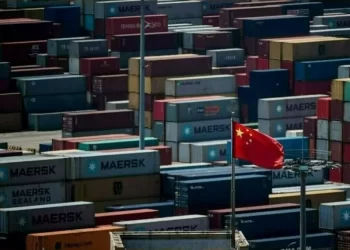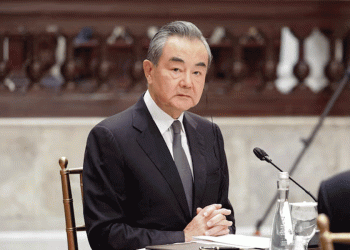SHANGHAI: China’s yuan eased slightly against the dollar on Monday but looked set to post its biggest quarterly gains since 2020, largely due to corporate unwinding of greenback holdings and Beijing’s latest burst of stimulus to prop up the economy.
Investor appetite was boosted after authorities rolled out massive stimulus last week and stock markets clocked historic gains.
However, the yuan strength was capped by state banks’ active buying of dollars to prevent the Chinese currency from rising too fast and too far, sources told Reuters.
“The goal should be to maintain stability of the yuan, which means to prevent rapid movement in either direction,” said Lynn Song, chief economist for Greater China at ING.
“I think 7 tends to be a psychological marker but there is no particular extra major risk if it is broken in either direction.
The onshore yuan continues to be a low volatility currency relative to other Asian FX.“ Song maintained his forecast for the yuan to trade at 7.10 at the end of this year and 7.00 by the end of 2025.
As of 0344 GMT, the onshore yuan traded at 7.0125 per dollar, 14 pips weaker than the previous close of 7.0111 on Friday.
If the yuan finishes the late night close at the midday level, it would have gained 3.63% in the June-September period to book the best quarter since late 2020.
Its offshore counterpart traded at 6.9942 per dollar, compared with the previous close of 6.9806.
China’s yuan eases from 7-month peak, economic data in focus
Prior to the market opening, the People’s Bank of China (PBOC) set the midpoint rate, around which the yuan is allowed to trade in a 2% band, at 7.0074 per dollar, its strongest since May 2023, and 24 pips firmer than a Reuters’ estimate of 7.0098.
Some market participants said they squared their books on the last trading day before the week-long Golden Week holiday that starts on Tuesday.
China’s financial markets will be closed for the long break and trading will resume on Oct. 8.
China’s central bank said late on Sunday it would instruct banks to lower mortgage rates for existing home loans before Oct. 31, as part of sweeping policies to support the country’s beleaguered property market.
Also, on the same day Guangzhou city announced the lifting of all restrictions on home purchases, while Shanghai and Shenzhen eased curbs on buying.
Yet, some investors said they would stay cautious given huge uncertainties around the upcoming US Presidential election and geopolitics.
“In the next 12 to 18 months, as China faces the prospect of higher trade tariffs from every direction, the easiest policy adjustment mechanism for the economy is likely to be currency depreciation,” said Rong Ren Goh, a portfolio manager in the fixed income team at Eastspring Investments in Singapore.









